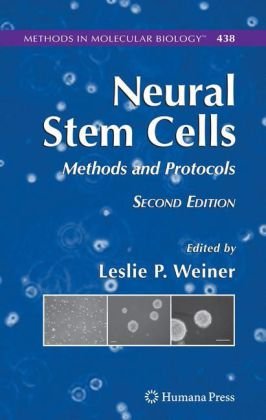

Most ebook files are in PDF format, so you can easily read them using various software such as Foxit Reader or directly on the Google Chrome browser.
Some ebook files are released by publishers in other formats such as .awz, .mobi, .epub, .fb2, etc. You may need to install specific software to read these formats on mobile/PC, such as Calibre.
Please read the tutorial at this link: https://ebookbell.com/faq
We offer FREE conversion to the popular formats you request; however, this may take some time. Therefore, right after payment, please email us, and we will try to provide the service as quickly as possible.
For some exceptional file formats or broken links (if any), please refrain from opening any disputes. Instead, email us first, and we will try to assist within a maximum of 6 hours.
EbookBell Team

4.8
44 reviewsAlthough there has been an explosion of interest and technology in the study of neural stem cells, many questions related to stem cell properties and neural stem cell lineage and differentiation still linger. Neural Stem Cells, 2nd Edition revises and expands upon the successful first edition in order to provide the most current, cutting-edge methods of today for the scientists working to answer these questions. The use of these step-by-step, readily reproducible laboratory protocols will allow investigators to produce pure populations that can serve as a means of understanding the biology of neural stem cells and adapting them for transplantation into disease models. In addition to the topics covered in the first edition, this new volume provides recently developed alternative methods for both human and rodent NSCs, along with chapters on karyotyping, migration, apoptosis, and NSC markers. Following the Methods in Molecular Biology™ series format, each chapter has an extended introduction for background, a list of necessary materials, and tips on troubleshooting and avoiding known pitfalls.
Comprehensive and current, Neural Stem Cells, 2nd Edition is an excellent source of information and inspiration for scientists longing to use these powerful cells against neurogenetic and neurodegenerative diseases.